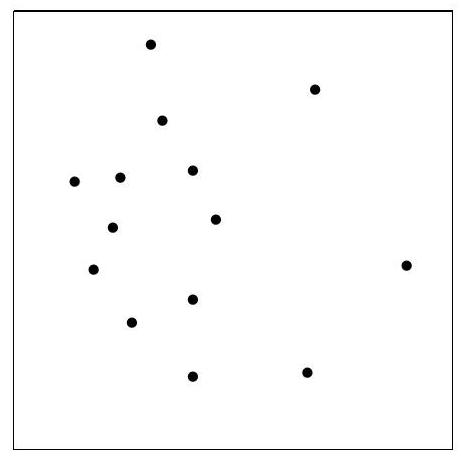Paper 2, Section II, F
Let and be two independent uniformly distributed random variables on . Prove that and , and find , where is a non-negative integer.
Let be independent random points of the unit square . We say that is a maximal external point if, for each , either or . (For example, in the figure below there are three maximal external points.) Determine the expected number of maximal external points.

Typos? Please submit corrections to this page on GitHub.